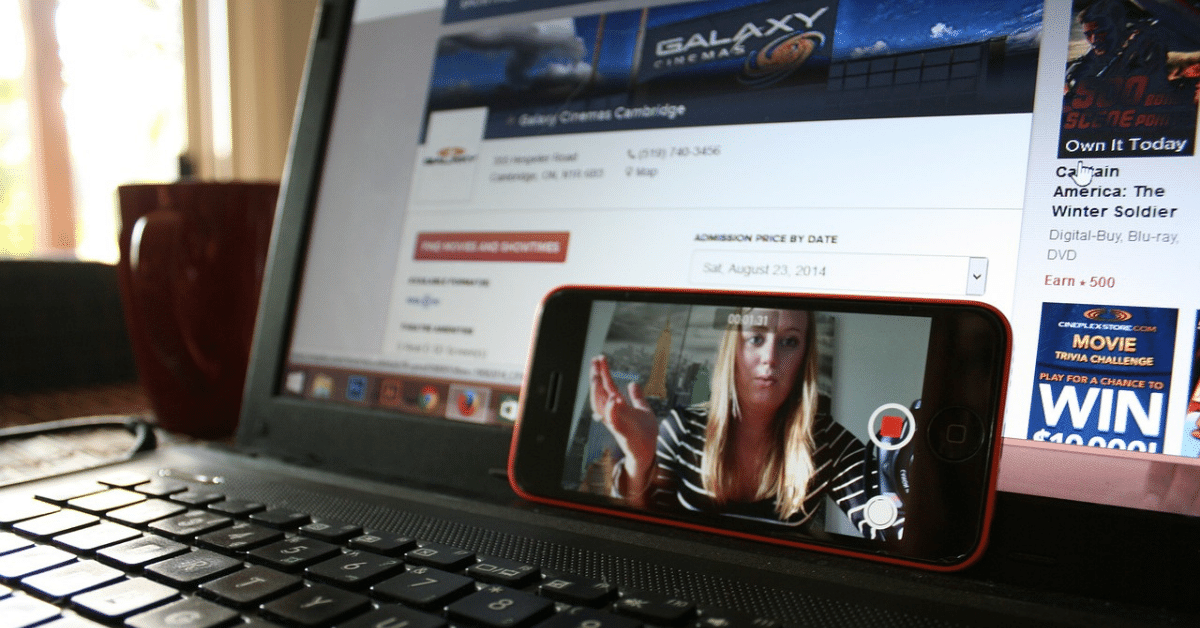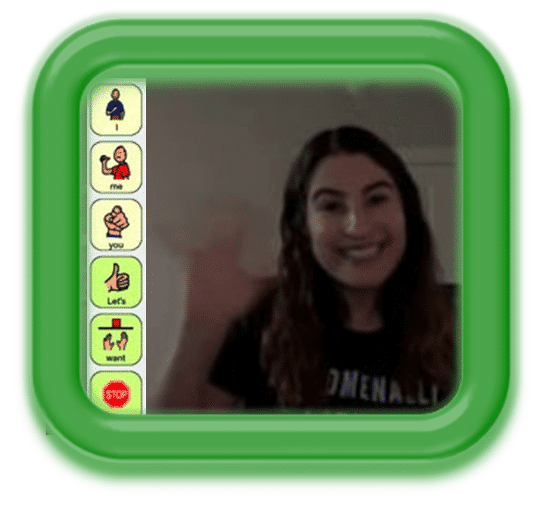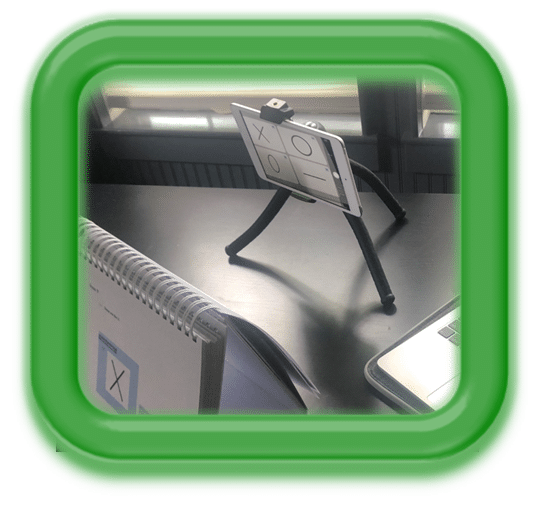Highly Effective Speech Language Telepractice Evaluations and Therapy
$75.00

Course Type: Video – 5 hours
ASHA Course Code: Service Delivery Associated with Speech, Language, Hearing and Related Disorders – 7010
Successfully adapt your test administrative skills, therapeutic techniques, and evaluation processes to provide the same level of services and evaluations while working remotely.
A 5-lesson course focusing exclusively on teletherapy for speech language pathologists.
This presentation introduces new technologies and interaction styles, equipping speech language pathologists to easily plan therapy, conduct evaluations, schedule effectively, increase show-rates, collaborate with parents and teachers, and share materials electronically. With a robust framework to organize sessions around, speech therapy becomes fun, interactive, and productive again!
| Population | Adult, Early Childhood, School Age |
|---|---|
| Topics | Articulation/Phonology, Evaluations, Exp/Rec Language |
| Duration | 5 hours |
| Format | Video |
Financial Disclosure: Ellen Kester, Ph.D., CCC-SLP. Dr. Ellen Kester is the owner of Bilinguistics and receives a salary. Bilinguistics receives royalty payments for online courses. Non-Financial Disclosure: Ellen Kester does not have any non-financial relationships to disclose.
Financial Disclosure: Scott Prath, M.A., CCC-SLP is a salaried employee of Bilinguistics. Bilinguistics receives royalty payments for online courses. Non-Financial Disclosure: Scott Prath does not have any non-financial relationships to disclose.
Financial Disclosure: Laura Finkel, M.S., CCC-SLP was an employee of Bilinguistics and received a salary. Bilinguistics receives royalty payments for online courses. Non-Financial Disclosure: Laura Finkel does not have any non-financial relationships to disclose.
Providing Highly Effective Speech Language Teletherapy
This presentation introduces new technologies and interaction styles so that speech language pathologists more easily organize therapy, schedule effectively, increase show-rates, collaborate with parents and teachers, and share materials electronically. With a robust framework to organize sessions, speech therapy becomes fun, interactive, and productive again.
How to Create Engaging Speech Language Intervention Using Teletherapy
Communication gains can be made when speech-language intervention is provided remotely with changes to how sessions are planned, how materials are organized, and how intervention is undertaken. In this workshop, we focused on key skills to transition professionals over to successfully providing speech-language therapy remotely through literacy-based intervention.
Conducting AAC and Social Skills Intervention Using Teletherapy
This presentation details how to conduct family-centered AAC and social skills intervention. Choosing therapeutic techniques that work in remote settings is key to success. Research-based strategies were presented that improve communication in virtual settings and enhance communication because of their highly interactive nature and increased parent involvement.
Conducting Language Evaluations Remotely
The abrupt shift to remote services has left evaluators asking many questions about conducting assessments online.
Here, we demonstrate the basics of teletherapy assessments, including how to conduct formal testing, informal testing, and dynamic assessment. We also consider the use of standardized scores and report blurbs for remotely-administered assessments.
Conducting Telepractice Speech Evaluations
For articulation, phonology, and fluency assessment, it is critical to see the child producing the sounds and have high-quality audio transmission to hear the sound productions. In this teletherapy workshop, we address formal testing, digital tools available, informal testing, dynamic assessment, the use of standardized scores, and report-writing considerations.
Conducting effective speech language therapy and evaluations remotely requires adapting our current materials and skillset to still be successful at our jobs. Success from a therapy standpoint means being able to move clients through their goals and improve communication or dismiss. Success from an evaluation standpoint means confidently choosing to qualify a child or explain why they don’t need services.
A lot has changed with the way speech language pathology intervention and evaluation is provided in the age of teletherapy. Resources continue to be introduced to improve therapy outcomes and make evaluation more effective. However, professionals continue to struggle to adapt professionally to their new environment because the administrative skills that are required to provide face-to-face interactions vary widely from the skills needed for virtual interactions.
The way speech language pathologists schedule sessions has completely changed. Where groups existed in the school and some clinic settings, nearly all sessions are now individual. While sessions normally fell within the school day, professionals have also had to accommodate parent work schedules and teacher group presentations schedules. Scheduling of speech sessions have to change and modernize to ensure show-rates.
For school speech language pathologists, interactions were almost exclusively with the teachers with periodic parent conversations. Now, this dynamic has completely flipped. Luckily, clinic professionals are already experienced with this “reverse” interaction style and we can lean on their knowledge to improve our interactions.
Speech therapy has largely been clinician directed with the client responding to prompts and the clinician adjusting based on the client’s success. Now, parent and classroom teachers are acting as intermediaries and carrying out the speech therapy objectives between sessions. Again, luckily our colleagues who have been serving Early Intervention populations are well versed in a parent-directed routines-based model that the rest of us can benefit from.
While it is true that some therapeutic techniques do not work in remote settings, several research-based strategies not only continue to improve communication in virtual settings but enhance communication because of their highly interactive nature and increased parent involvement. This presentation covers how to find appropriate materials, how to intervene successfully, and how to plan for group intervention. We will discuss evidenced-based practices for speech-language intervention that work virtually and in person. The participants will be able to explain the important role of teaching macrostructure, robust storytelling, and phonological awareness tasks that promote intelligible speech. Many school districts are advocating for flexible service delivery models that can quickly shift from in person to virtual learning with increased accountability for student engagement.
Evidenced-based practices for Assistive and Alternative Communication and Social Skills intervention that work virtually and in-person will be discussed. The participants will be able to share tablet screens with applications that facilitate social interaction, facilitate aided-language input and systematic use of core-vocabulary age-appropriate activities for pre-school through high school levels. Best practices for family coaching will be discussed for in-person and virtual learning. Participants will learn Family-Centered Skills, such as the Evidenced-Based LAFF Strategy (Listen, ask questions, focus on the issues, find a first-step). Mandak, K., Light, J., & McNaughton, D. (2020). This research, based on school-based speech language pathologists in Pennsylvania, teach active-listening skills for family and teacher centered practice. Device abandonment is one of the greatest challenges SLPs face in the school setting. Strategies for increased buy-in from teachers and parents will be reviewed.
There are many new considerations for speech-language pathologists who are faced with conducting speech evaluations remotely. First, there are basic considerations for videoconferencing platforms, such as which ones to use, how to display information, how to give the student the ability to make selections, and how to ensure that both parties can hear one another and hear any verbal stimuli through the computer. Next, there are different considerations for different types of testing.
Standardized language and speech evaluations bring up the important question of whether or not we can use the norms for tests that were standardized in in-person settings. We share interviews with two experts from the field of test development. One of them, Elizabeth Allen, has been the director of test development at Pro-Ed for the past twenty years. She shares studies indicating minimal differences between remote and in-person administration of language tests. The other, Dr. Elizabeth Peña, is the author of the Bilingual English-Spanish Assessment (BESA), and she shares the urgency of continuing to conduct assessments rather than putting testing on hold until it can be done in a face-to face setting.
For speech testing, including articulation, phonology, and fluency, it is critical that we can both see the child producing the sounds, and that we have quality audio transmission so we can hear the child productions. We also need to ensure that they can hear models and prompts clearly, and can see the visual stimuli. In this presentation we will consider the impact of remote testing on scores. We’ll discuss similarities and differences in remote versus in-person testing for articulation and phonology assessment, and the impact of those differences on standardized scores.
This presentation highlights the ways we can successfully adapt our administrative skills, therapeutic techniques, and evaluation processes to continue to provide successful speech-language intervention.
Participants will :
• Explain three ways to use technology to improve scheduling teletherapy and increase show-rates
• Utilize interactive technology tools to increase client and family engagement
• Identify 3 evidenced-based intervention routines that can easily shift from in-person learning to teletherapy
• Measure client’s progress towards goals using teletherapy
• Discuss the differences between face-to-face intervention and telepractice and the implications for client progress
• Implement formal, informal, and dynamic assessment testing approaches remotely
Time-Ordered Agenda:
1 hour – Providing Highly Effective Speech Language Teletherapy
1 hour – How to Create Engaging Speech Language Intervention Using Teletherapy
1 hour – Conducting AAC and Social Skills Intervention Using Teletherapy
1 hour – Conducting Language Evaluations Remotely
1 hour – Conducting Telepractice Speech Evaluations
Need CEUs?

 Share
Share
 Tweet
Tweet
 LinkedIn
LinkedIn
 Pin
Pin
 Email
Email










